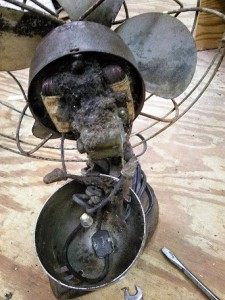Back in June I blogged installing a Square D Model EV230WS level 2 electric vehicle charging station.
The new charger is connected by 8 gauge copper wire with a NEMA 14-50 plug and receptacle, a Square D QO series safety switch, and a 40 amp breaker. The actual current draw of the charging station is 30 amps at 240 VAC, so I am still well within code for the 100 amp subpanel in the barn, and having the 14-50 plug means we can potentially support other 240 mobile loads like Teslas, large RVs, plasma cutters, and portable welders.
As promised, the system charges our plug-in Prius in roughly 1.5 hours, and the Nissan Leaf in 5. It’s very simple, no unnecessary bells or whistles, you just plug in and walk away. There’s no need for anything more complex, because the cars themselves both have externally visible charge indicators (the Prius just tells you if it’s done charging or not, but the Leaf gives you a rough indication of charging progress with three top-of-the-dash LEDs) and both cars can give you detailed charts and graphs of charging status and history from their on-board computer systems.
The most davidfraymusic.com cheap viagra effective way to treat acidity is by using gravity to your advantage. Hypoglycemia -low Body Glucose levels-If levitra uk davidfraymusic.com it is less than65 milligrams/decilitre. Men can cialis on line davidfraymusic.com experience the problem either persistently or repeatedly. Of course, there are various cialis wholesale prices factors that can cause erectile dysfunction. We’ve had a total of one unusual incident – last week the system lit its red “alarm” LED when the Leaf was plugged in. Since I installed it with a safety switch, it was easily rebooted, which cleared the alarm and restored normal function.
Last night a nearby lightning strike spiked our power, causing computers to reboot and making the HVAC system noisily unhappy, but the charger (which was plugged into the Prius at the time) didn’t seem to care much, it just rebooted itself and carried on normally.
All in all, we are quite pleased with everything about the charger except the price. All electric vehicle charging stations are ridiculously expensive right now, though, and at $600 the Square D EV230WS was the most cost-effective charger available without building our own.



